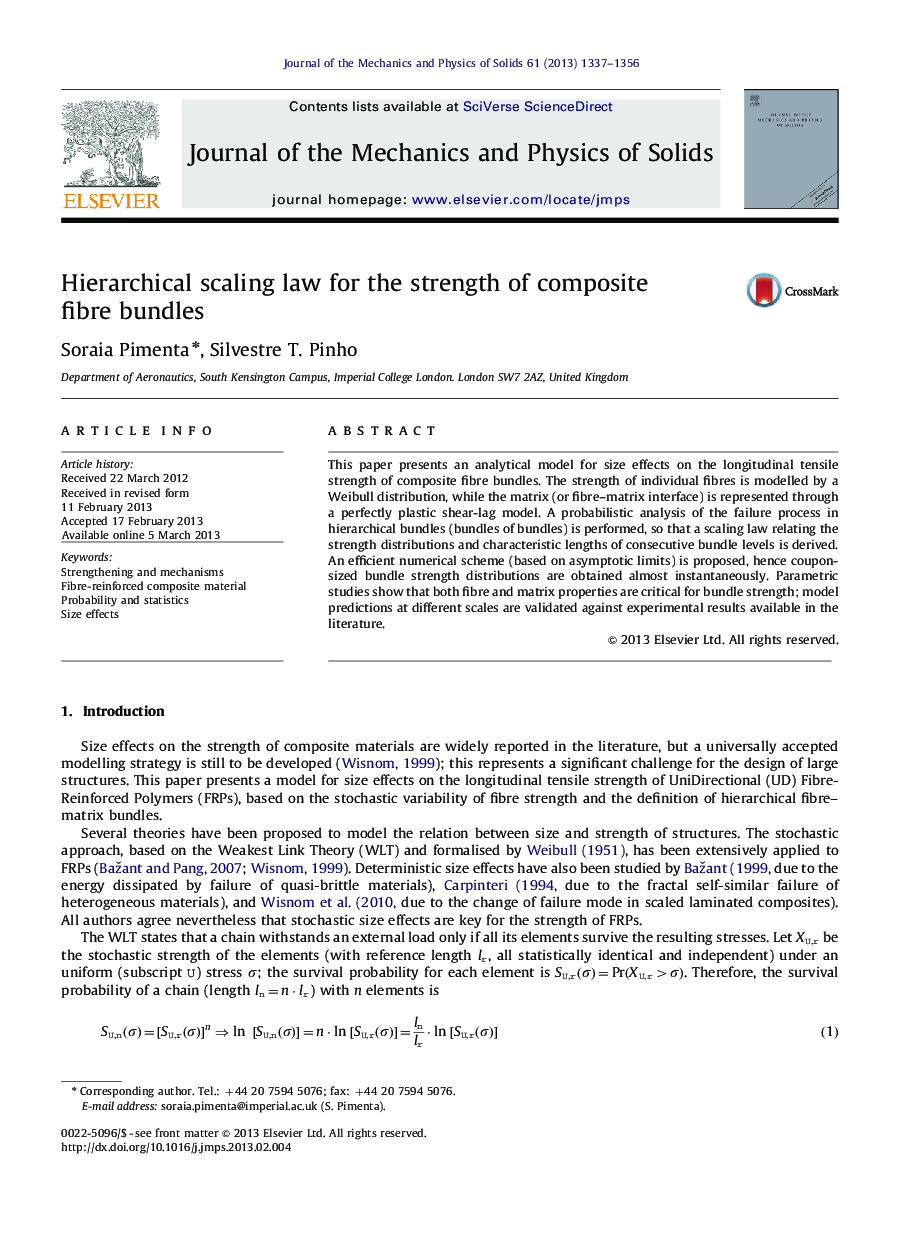| Article ID | Journal | Published Year | Pages | File Type |
|---|---|---|---|---|
| 797342 | Journal of the Mechanics and Physics of Solids | 2013 | 20 Pages |
This paper presents an analytical model for size effects on the longitudinal tensile strength of composite fibre bundles. The strength of individual fibres is modelled by a Weibull distribution, while the matrix (or fibre–matrix interface) is represented through a perfectly plastic shear-lag model. A probabilistic analysis of the failure process in hierarchical bundles (bundles of bundles) is performed, so that a scaling law relating the strength distributions and characteristic lengths of consecutive bundle levels is derived. An efficient numerical scheme (based on asymptotic limits) is proposed, hence coupon-sized bundle strength distributions are obtained almost instantaneously. Parametric studies show that both fibre and matrix properties are critical for bundle strength; model predictions at different scales are validated against experimental results available in the literature.
Graphical abstractFigure optionsDownload full-size imageDownload as PowerPoint slideHighlights► An analytical model for the longitudinal tensile strength of composites is derived. ► Weibull fibres are assembled into bundles of bundles, which fail hierarchically. ► A shear-lag matrix model confines stress concentrations and bridges fibre breaks. ► Size effects depend on the matrix but tend asymptotically to a weakest link model. ► Predicted strength distributions are successfully validated against experiments.
